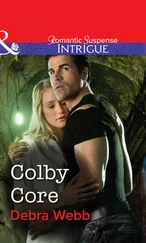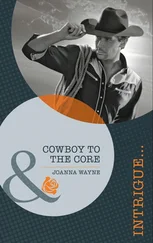Javid A. Parray
PhD, PDF
1 A Review of Endophytic Microbiota of Medicinal Plants and Their Antimicrobial Properties
Robeena Sarah, Nida Idrees, and Baby Tabassum
Toxicology Laboratory, Department of Zoology, Govt. Raza P.G. College, Rampur 244901, India
Medicinal plants have been used in many parts of the world for thousands of years in traditional treatments for numerous diseases. In rural areas of developing countries, they are still used as a primary source of drugs [1]. About 80% of developing countries use conventional medicines for general health care [2]. Natural products can be obtained from medicinal plants that have proven to be a rich source of biologically active compounds; many of them are used to develop novel chemicals for the pharmaceutical industry. With regard to disease-causing microorganisms, the increasing resistance to therapeutic agents currently in use, such as antibiotics and antiviral agents, has led to renewed interest in exploring novel anti-infective compounds. As approximately 450,000 plant species are available worldwide, of which only one per cent has been phytochemically analyzed, the prospects of locating new bioactive compounds are tremendously positive.
Medicinal plants are essentially considered complex and dynamic when used in systems for remedial therapy. Hence, their chemical composition depends upon several factors, such as botanical species, genetically determined chemotypes, anatomically a part of the plant (e.g., seed, flower, root, and leaf), storage, sun exposure, humidity, kind of ground, time of harvesting, and ecological area. Moreover, biogenic factors, such as the fungal and bacterial endophytes related to diverse parts of the plant, can influence their chemical composition. In recent years, the research and study of the multiple interactions occurring between endophytes and medicinal plants have modernized our knowledge of plant biology, with entirely unexpected and remarkable application perspectives: the probability of modulating, amplifying, or interfering within the biosynthesis of phytoconstituents (e.g., terpenes, polyphenols, and alkamides), but also to engineer the synthesis of latest molecules directly, for instance with antibiotic activity.
1.2 Antimicrobial Properties of Medicinal Plants with Particular Reference to Neem ( Azadirachtaindica )
There are many reports on conventional medicinal plants and natural products to treat several diseases. Many plant-based medicines utilized in traditional therapeutic systems as agents in the treatment of infectious diseases are recorded in pharmacopoeia, a variety of which have been investigated recently for their efficiency against disease-causing microorganisms. The general antimicrobial activities of medicinal plants and their products, such as essential oils, were analyzed earlier [3,4].
Moreover, medicinal plants also can play an elementary function against rising antibiotic resistance both directly for their antimicrobial activities (e.g., antibacterial, antiviral, antifungal, and antiparasitic ones) and indirectly by reducing resistance against antibiotics.
There are numerous medicinal plants with well-known antimicrobial activity, including traditional Chinese or Ayurvedic medicine. Among medicinal plants adopted in experimental studies, a classic example is the Azadirachta indica (Figure 1.1) commonly known as neem, an evergreen tree of the sub-tropics and tropics, indigenous to the Indian subcontinent, with a recognized ethnomedicinal value and significance in agriculture and also in the pharmaceutical industry [5]. Every part of the neem plant, such as leaves, fruits, seeds, bark, and roots, contains compounds with proven antioxidant, anti-inflammatory [6], antidiabetic, antibacterial, antigingivitic, antifungal, anticancer, antiviral, antiulcer, neuroprotective, antipyretic, hepatoprotective, nephroprotective, and wound-healing properties. It possesses incredible potential within the field of medicine, pest management, and environmental protection. Neem may be a natural source of eco-friendly herbal pesticides, insecticides, and agro-based chemicals [7]. The impact of mouthwash containing neem on plaque and gingivitis was analyzed in a clinical study, indicating that it may help maintain mouth hygiene and suggest an enhanced effect on preventing oral diseases since it is both cost-effective and easily accessible [8]. Approximately 400 compounds are isolated from various parts of neem until now, and significant bioactive secondary metabolites and relatively 30 compounds are isolated from endophytes of neem [5]. Endophytic fungi of neem produce a wide range of secondary bioactive metabolites with potential compounds, namely, melanin, antimicrobial, antioxidant, anti-inflammatory, insecticides, nematicides, etc. [5].

Figure 1.1 Medicinally important parts of the Azadirachta indica (neem) tree showing flowers; fruits; twigs; bark and leaves.
Neem imposes a check on microbial growth and, in the breakdown of cell membrane capability, exhibits antimicrobial properties [9]. Neem nanoemulsion displayed antibacterial activity by disturbing the integrity of the bacterial cell membrane against strains of a bacterial pathogen. Different parts of the plant reveal antimicrobial properties against a wide range of pathogenic microbes [10]. Neem extract has shown antimicrobial effects against Streptococcus mutans and S. faecalis [11]. A new vaginal contraceptive, NIM-76, obtained from neem oil, has shown an inhibitory effect on the growth of various pathogenic microorganisms, including fungi, bacteria, and viruses [12]. The antibacterial property of neem seed oil in vitro against 14 strains of pathogenic bacteria has been recently assessed [13].
1.3 Current Trends on Bioactive Metabolites from Endophytic Microbiota of Medicinal Plants
A significant development in the understanding of plant-associated microbiota has been prompted by massive DNA sequencing technology in the past decade. Such close connection of microorganisms with plants has a broad contribution to plant nutrient absorption, growth, stress tolerance, and health status, and secondary metabolite production [14]. Metal hyper-accumulating plants are known to shelter a co-evolved microbiota [15,16], and an essential role has been recognized in microbial-assisted phytoremediation [17]. Medicinal plants are well-known to shelter endophytes that are potentially concerned with the biosynthesis of phytoconstituents and can synthesize bioactive compounds.
The composition of biologically active components of medicinal plants differs broadly depending on their soil type, plant species, and their association with microorganisms [18,19]. These plant-linked microbial communities and their physiological functions are also strongly influenced by bioactive secondary metabolites synthesized by medicinal plants [20–22]. Moreover, for specific character and activities, including growth, nutrient acquirement, induced systemic resistance, and tolerance to abiotic stress factors, plants depend on their microbiome [23–27]. Although many medicinal plants are well-studied with relation to their microbiome, phytochemical constituents, and pharmacological properties, the physiological interactions between host and microorganisms remain inadequately understood [28]. The plant-linked microbiome consists of different microbial communities existing within the endosphere, shoots, and roots [27,29]. The rhizosphere of many plants is known to be a potential source for selecting good microorganisms that may affect plant health and is well-studied [21,30,31]. Hence, a valuable understanding of the microbial ecology of plant-associated bacteria may provide by considering the response of microbial communities to adaptation within the physiochemical atmosphere of the rhizosphere. The abundance of antagonistic bacteria within the rhizosphere of medicinal plants like sweet false chamomile ( Matricaria chamomilla ), Solanum distichum , and common marigold ( Calendula officinalis ) was observed [32]. The root-linked bacteria of Ajuga bracteosa displayed a broad range of plant growth-promoting activities by producing siderophores (iron-chelating compounds) and indole ethanoic acid and reveal antioxidant activity [33]. The vast and considerable collection of endophytic fungi from neem may represent a distinct source of the useful bioactive antimicrobial and insecticidal compounds [ table 1.1] associated with Azadirachta indica such as the azadirachtins and related tetranortriterpenoids [50]. Recently, endophytic microbes have been on the verge of increased investigation due to their close interaction with the host [34]; it is assumed that the phytochemical constituents of plants are related, however, directly or indirectly, to endophytic microorganisms and their associations with host plants [20,35].
Читать дальше












